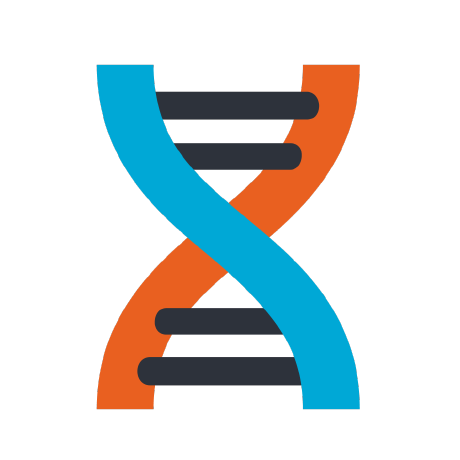Synopsis
The GitHub Accelerator program offers an opportunity for open source maintainers to receive an a sponsorship of $20K to work on their project, paired with guidance and workshops from open source leaders, with an end goal of building durable streams of funding for their work.
The requirements to apply are simple enough:
- Have an active online profile on GitHub
- Be located in one of the regions supported by GitHub Sponsors
- Not be a current employee of GitHub and/or any of its parent/subsidiary companies
You’ll be much more likely to be selected if you:
- Have an active and growing set of users
- Understand how you want to grow and maintain your project
- Wish to pursue open source work full-time
The projects that participated in this edition
For the first edition of the GitHub Accelerator, there were 20 projects, from all over the world.
Here is a short table with the project name, project description and my personal rating (1-10)*:
| Project Name | Project Description | My personal rating (1-10)* |
|---|---|---|
| Analog JS | Analog is a fullstack meta-framework to build applications and websites with Angular. | 8 out of 10 |
| AtriLabs Engine | The Python web framework to build production-grade apps. | 5 out of 10 |
| HTMX | Makes AJAX, Web Sockets, etc. available directly in HTML | 9 out of 10 |
| CodeHike | Tools for building all types of code walkthroughs: blogs, docs, slides, tutorials, etc. | 8 out of 10 |
| Dioxus | Friendly React-like GUI library for desktop, web, mobile, and more, written in Rust. | 6 out of 10 |
| LinkFree | Connecting with your audience with a single link, showcasing your content and projects. | 6 out of 10 |
| Seamly 2D | Design CAD to democratize and de-centralize fashion design & production. | 7 ouf of 10 |
| nbdev | Increase developer productivity by 10x with a new exploratory programming workflow. | 6 out of 10 |
| Formbricks | We’re building all essential form functionality. Modular, customizable & extendable. | 9 out of 10 |
| SniffNet | Cross-platform application to comfortably monitor and analyse network traffic. | 8 out of 10 |
| PyPandoc | Pypandoc provides a thin wrapper for pandoc, a universal document converter. | 6 out of 10 |
| Mockoon | Mockoon is the easiest and quickest way to design and run mock REST APIs. | 7 out of 10 |
| Nuxt | An intuitive framework for building web applications, built for the edge. | 10 out of 10 |
| Responsively App | A dev-tool for web developers that aid in faster responsive web page development. | 10 out of 10 |
| Datasette | An open source multi-tool for exploring and publishing data. | 9 out of 10 |
| Spyder | The Scientific Python Development Environment. | 10 out of 10 |
| Strawberry | A new GraphQL library for Python inspired by dataclasses. | 7 out of 10 |
| Termux | A terminal emulator for Android that provides 2000+ linux packages to code on phone. | 10 out of 10 |
| Poly | Poly is a fast, well tested Go package for engineering organisms. | 6 out of 10 |
| tRPC | End-to-end typesafe APIs made easy. Never write another API contract again. | 8 out of 10 |
* The rating is solely based on my personal opinion, and it is not meant to be a reflection of the quality of the project. I will explain for each project why I gave it the rating that I did.
My thoughts on the event
The GitHub Accelerator provided a valuable opportunity to connect with fellow open source maintainers and gain insights from their experiences. I gained a wealth of knowledge on project growth and sustainability, enhancing my own projects.
Being the inaugural edition, the event proved to be a resounding success. I anticipate GitHub’s commitment to organizing future iterations of this event, fostering continued collaboration and learning.
While the event was not without minor hiccups expected from a debut edition, such as audio and video issues in the initial ~15 minutes, swift resolutions were implemented, ensuring a smooth conference experience. However, I believe that the organizers could have conducted more comprehensive platform testing prior to the event, considering GitHub’s stature as a prominent tech giant.
All in all, the GitHub Accelerator left a positive impression as a remarkable event, and I eagerly look forward to its future editions.
My notes on the projects
Analog JS
Analog JS is an exciting fullstack meta-framework designed for building applications and websites using Angular. This project holds great promise, offering developers the ability to create both frontend and backend components seamlessly.
Built on the foundation of Angular, a widely popular frontend framework, Analog JS showcases impressive usability through its intuitive demo. The framework’s similarities to Next.js, a renowned frontend framework for React, are worth noting.
Upon evaluation, I awarded this project a rating of 8 out of 10 based on its presentation. However, I deducted 1 point due to the presenter’s fragmented delivery, resulting in a challenging comprehension experience.
Additionally, another 1 point was deducted as the presentation proved rather concise, leaving several topics insufficiently covered. Thus, my familiarity with the project, without further research, is limited to the following highlights:
Evident ease of use. Comprehensive fullstack meta-framework leveraging Angular. Utilization of a file-based routing system akin to Next.js. While the presentation’s brevity left me yearning for additional insights, the potential of Analog JS remains undeniably intriguing.
You can learn more about this project by following:
AtriLabs Engine
“The Python web framework to build production-grade apps.”
Except that what was presented in the demo was a typescript project, not a python project.
From a personal standpoint, this project failed to capture my enthusiasm, as it simply did not resonate with me.
In terms of rating, I assigned it a modest score of 5 out of 10, primarily due to the following drawbacks:
- Deducted 1 point as glimpses of Python code were observed during the demo, contrary to the predominantly TypeScript environment.
- Docked 2 points due to the presenter’s rapid tab-switching, making it challenging to follow the presentation seamlessly.
- Withheld another 2 points as the project’s overall presentation seemed bewildering.
Curiously, a visit to the project’s GitHub page reveals surprising language distribution:
67.5% JavaScript 30.6% TypeScript 1.8% Python… Despite these statistics, AtriLabs Engine appears to be a framework that potentially caters to the no-code/low-code/code generator niche, indicating inherent capabilities.
Nevertheless, comprehending the exact market or specific use cases for a project like this eludes me, and I apologize for the lack of clarity on this matter. You can learn more about this project by following:
HTMX

Behold HTMX, a project that piqued my interest from the very beginning.
Now, this project seemed very interesting to me.
Throughout the presentation, my mind fixated on the potential synergy between Web Components and HTMX. Combining these technologies could yield remarkable results.
The presenter demonstrated remarkable proficiency, delivering a well-structured presentation that showcased their seasoned expertise in product pitches. I thoroughly enjoyed the experience.
As a junior developer, I previously encountered XHTML, appreciating its ingenious concept. Upon discovering HTMX, a sense of nostalgia washed over me, reigniting my excitement.
Considering the overall package, I bestowed a commendable rating of 9 out of 10, with only one minor drawback:
- A slight deduction of 1 point arose from my desire to witness a broader array of examples, extending beyond the limited showcase.
In summary, HTMX emerges as a powerful tool, streamlining web development with simplicity and elegance. Its potential for creative utilization appears vast, making it a promising addition to the developer’s toolkit.
You can learn more about this project by following:
CodeHike

CodeHike is a tool for building all types of code walkthroughs: blogs, docs, slides, tutorials, etc.
I think that this project is very interesting, and it has a lot of potential. I think that it can be used to create interactive tutorials, and I think that it can be used to create interactive documentation.
I gave this project a 8 out of 10 because of the following minuses:
- 1 point taken because the presentation seemed too practic - I would have liked to learn more about the project.
- 1 point taken because the presenter seemed to just want to sell the product, with no “solid” background information.
You can learn more about this project by following:
Dioxus

Dioxus, in my opinion, seemed like an Electron alternative, built in Rust.
However, what got me interested in this project was the fact that it was built in Rust.
Unfortunately, the presenter seemed to be rather nervous, and it was hard to follow the presentation. I did not completely understand what this project is about, and I did not understand what it really does, besides being an Electron alternative.
I would have liked to learn more about this project, but the presentation seemed too short.
I gave this project a 6 out of 10 because of the following minuses:
- 1 point taken because the presentation seemed too short.
- 1 point taken because the presenter seemed to be nervous, and it was hard to follow the presentation.
- 1 point taken because I feel that the presentation was not structured well.
- 1 point taken because I did not manage to see how the React library is used.
In summary, Dioxus emerges as a promising endeavor, leveraging Rust’s prowess to offer an alternative to Electron.
Although my understanding remained incomplete due to the presentation’s limitations, the potential of this project in bridging gaps left me intrigued.
You can learn more about this project by following:
LinkFree

LinkFree is a tool that allows you to create a personal landing page, with links to your social media profiles.
While social media platforms may not be my preferred avenue of engagement, I acknowledge the value this project brings to those seeking a centralized platform to promote their online personas. Although I limit my social media presence to LinkedIn and GitHub, LinkFree caters to a wider range of social media enthusiasts.
In my pursuit to comprehend this project, I consulted my peers and discovered a similar offering known as LinkTree. Comparing the two, I endeavored to discern the distinctive features and benefits of LinkFree.
Unfortunately, after watching the presentation of this project, my personal note on this project is 6.
I’ve rated it as a 6 because I did not like the following:
- 3 points taken because I did not understand the use case for this project.
- 1 point taken because the presentation seemed too focused on selling this product.
As with any endeavor, personal preferences and needs play a significant role in determining the fit of a project like LinkFree. Although it may not resonate with my specific requirements, I recognize its potential value for those seeking a comprehensive online presence through centralized landing pages.
In conclusion, LinkFree empowers individuals to curate personal landing pages, connecting them with their social media profiles. While I navigate a more limited social media landscape, LinkFree provides a valuable solution for those seeking a cohesive online presence.
You can learn more about this project by following:
Seamly 2D

I found this presentation to be out of the ordinary so to speak.
The presenter seemed to know the industry where this project was targeted at, however, the explanation of the project was not clear.
I was cool to see a CAD-like application built in Qt. I think that this project has a lot of potential, and I think that it can be used to build a lot of cool products.
I’ve rated this project as a 7 out of 10 because of the following minuses:
- 1 point taken because the presenter’s explanation of the project was not clear, for the uninitiated in the fashion industry.
- 1 point taken because the presentation seemed to not have any
solidsubstance. - 1 point taken because the given resource (the project’s website) was loading slow and it was hard to follow.
Despite these minor setbacks, Seamly 2D remains an enticing endeavor, pushing the boundaries of CAD applications in the realm of fashion design. The project’s potential for enabling novel and imaginative creations within the industry should not be underestimated.
Embark on a journey with Seamly 2D, an exploration of CAD-like applications poised to revolutionize the fashion landscape. While the project’s presentation may have faltered in certain aspects, it reflects an exciting opportunity for innovation and creative expression.
You can learn more about this project by following:
nbdev

The project presentation seemed very dull. I mean - the concept seemed cool, but the way that it was presented was not that great.
I believe that the concept is flawed, however. Doing all your development and documentation in Jupyter Notebooks, seems, for me, to be puzzling. Why would you store your documentation in a Jupyter notebook instead of a proper documentation medium?
I’ve rated this project as a 6 out of 10 because of the following minuses:
- 1 point taken because the presentation seemed rather empty.
- 2 points because I do not believe in this product’s vision - documentation is important, but having it in a Jupyter Notebook doesn’t seem to be an
enterprisesolution. - 1 point taken because there was no live demo of the product, for the uninitiated.
Despite these setbacks, nbdev remains an intriguing venture, harnessing the power of Jupyter Notebooks in the realm of development and documentation. However, concerns regarding its suitability as an all-encompassing solution for enterprise needs persist.
Uncover the possibilities of nbdev, an exploration into the fusion of Jupyter Notebooks and development. While the project presentation may have left much to be desired, the concept itself invites further examination and evaluation of its practicality within specific use cases.
You can learn more about this project by following:
Formbricks

This project seemed really cool in my opinion!
I really loved the presentation and the demos! It showed that this project is in good hands.
For me, being able to get the right feedback at the right time and from the right individual is crucial. I was sold on this project from the first minute of the presentation.
However, I did rate this project as a 9 out of 10 because of the following minuses:
- 1 point taken because I would have wanted to see how this product differentiates from other alternatives.
Join the realm of Formbricks, an innovation dedicated to streamlining form management for unparalleled user experiences. Embrace the harmonious fusion of efficiency and effectiveness as you navigate the intricacies of form handling.
You can learn more about this project by following:
Sniffnet

This project was pretty cool.
Unveiling an alternative to renowned network sniffers like Wireshark and TCP dump, Sniffnet breathes new life into the scene. Healthy competition fosters growth and innovation, and Sniffnet’s presence adds a refreshing dimension.
The presentation was interesting - I felt that there was too much weight on the user experience, instead of features. However, I am confident that this project will revitalize the scene of network sniffers.
I have rated this project a 8 out of 10 because of the following minuses:
- 1 point taken because I felt that the presentation was more oriented in creating a good user experience than on bringing new features.
- 1 point taken because I felt that the presenter was a bit aggresive towards the scene of network sniffers - there was a whole slide of showing how Sniffnet has MORE followers than Wireshark.
It’s important to note that I hold a different view regarding Wireshark’s efficacy. Having utilized Wireshark at Microsoft, working with Fortune 500 companies and analyzing massive data traffic volumes with ease, I can attest to its proficiency.
At present, I believe that Wireshark remains a formidable product, and while Sniffnet shows promise, only time will truly reveal its practicality and performance. Stay tuned for the unfolding of this exciting venture.
You can learn more about this project by following:
PyPandoc
(I was not able to find the logo of this project)
I did not really understand the meaning of this project. I understood that this project is basically a document converter - such as from Markdown to PDF, or from Markdown to HTML.
Unfortunately, I do not see this product’s use case or vision. I believe that document converters should be implemented to be as user friendly as possible.
Having to know python code to run this converter is a no for me.
Why I think this way? Because, as a programmer, I know how to convert different document formats with ease, or I have the knowledge to be able to find out how to do this.
As a non-programmer, I would love to be able to convert a .txt file to a .pdf file for example, but again, I am a non-programmer.
If I have to read about python code just to be able to convert some documents, you lost me, as a potential consumer.
I have rated this project a 6 out of 10 because of the following minuses:
- 3 points because I felt that this product does not have a solid use case or vision.
- 1 point because I would have loved to see a demo of this product, perhaps my vision was skewed.
Rest assured, the true extent of PyPandoc’s capabilities may warrant further exploration. Witnessing a demonstration could provide valuable insight, potentially altering one’s perspective.
You can learn more about this project by following:
Mockoon

This project seemed pretty cool - until it seemed to complex!
At first, I was really skeptical - as I used to be a React developer, I was used to using the json-server library to mock APIs with JSON data.
However, this project does much more than mock an API by using a JSON source of data.
And - this is where I draw the line.
I believe that, in your early development phase, it’s ok to have a library that mocks the actual API, just to be able to scaffold out your code. However, this library (or project) aims to do much more:
- CLI integration for streamlined testing.
- Request and response logging akin to popular tools like Postman.
- Powerful request and response rule management for robust validations.
- Customizable routes for creating mock APIs.
All in all, this project does a lot of things. I consider this project interesting, but not for me.
I would arguably stick with json-server in the early phase of development, until I get the scaffolding done right.
Mockoon seems like a great tool for an indie company or startups - however, for the enterprise area, I don’t see its place.
I have rated this project a 7 out of 10 because of the following minuses:
- 1 point taken because I did not resonate with the vision of the project.
- 1 point because I felt that this project did not showcase it’s full potential - why would we need such a complex project? What does it do better than other projects?
- 1 point because I felt that the presenter wanted to sell this product more than showcase it’s usefulness.
It is worth exploring Mockoon further, particularly for those seeking a comprehensive API mocking and testing solution. A deeper understanding of its capabilities may reveal its value and utility for specific development scenarios.
You can learn more about this project by following:
Nuxt
There’s not much to say about this project.
This is a fully fledged project and product.
There is little need for me to provide a personal opinion on this well-established product, as it has earned its reputation as an enterprise-ready solution trusted by numerous companies. Its track record speaks for itself.
Given its widespread adoption and proven effectiveness, I have confidently rated this project a perfect 10 out of 10. Its popularity and utilization among thousands of developers serve as a testament to its value and reliability.
As you explore Nuxt, take inspiration from the powerful capabilities it brings to the table, leveraging the VueJS framework. The library’s extensive features and comprehensive tooling make it an ideal choice for developing enterprise-grade web applications.
Whether you are an experienced developer or a newcomer, Nuxt offers a wealth of resources and a vibrant community to support your endeavors. Embrace the potential of Nuxt and unlock new possibilities for your web development projects.
You can learn more about this project by following:
Responsively App
Experience the excitement of discovering the Responsively App, a captivating project featured in the GitHub Accelerator. The visually appealing logo immediately captures attention and hints at the possibilities this tool offers.
As a web developer, I understand the challenges of achieving consistent and visually captivating websites across different platforms. The emergence of design tools like Figma revolutionized responsive design, simplifying the creation of designs that adapt flawlessly to various screen sizes.
Now, Responsively App takes it a step further by providing a valuable testing tool to ensure your design looks exactly as intended on each platform. This innovative product has captured my interest, and I’m eager to incorporate it into my future web development projects.
Congratulations to the talented team behind Responsively App for their remarkable work. Their dedication and ingenuity have resulted in a tool that empowers web designers and developers to create stunning and consistent experiences across all devices.
Get ready to elevate your web design testing and unlock new levels of precision and efficiency with Responsively App. Join the growing community of users who have embraced this powerful tool and embark on a seamless web design journey.
Good job to everyone @ Responsively App team!
You can learn more about this project by following:
Datasette
The presenter of this project was the author of the project!
I liked the way the author made a story about this project and tried to expose the product’s feature in the story. I enjoyed watching the presentation and I felt that the demo was really good too.
Unfortunately, I only rate this project 9 out of 10 because of the following minuses:
- 1 point taken since I felt that the author wanted to achieve a lot of goals, instead of polishing up the whole project.
You can learn more about this project by following:
Spyder

This project, just like nuxt and termux - is already widely popular.
Spyder, adorned with its distinctive logo, stands as a widely popular project in the realm of Python development and data science. Its reputation precedes it, being embraced by countless individuals, including educational institutions.
As an experienced user of Spyder during my final year at university, I can confidently attest to its usefulness and intuitive nature. This powerful tool has greatly assisted both Python developers and data scientists in their endeavors.
Given its well-established presence, I believe there is no need for me to assign a numerical rating to this project. Its impact is already felt by thousands of users worldwide.
For those seeking inspiration from Spyder, the renowned Python tool, I encourage you to explore its capabilities and features firsthand. Discover how this versatile tool can enhance your Python development workflow and empower your data science endeavors.
Join the community of Spyder enthusiasts who have harnessed its potential. Unleash your coding prowess with Spyder and unlock new horizons in the world of Python programming.
You can learn more about this project by following:
Strawberry

Strawberry’s presenter was one of the most hyped presenters in the conference!
It was an interesting project, however, it just did not stick with me because of two main things:
- I am not an active Python Developer, and from what I’ve seen, I wouldn’t want to use this library for GraphQL purposes, simply because I feel that it’s not
pythonic - I feel that having a bunch of @strawberry decorators in my code seems weird - instead of separating GraphQL types / schemas, I have them bundled up in my Python code..?
I have rated this project a 7 out of 10 because of the following minuses:
- 1 point taken because I don’t see this product in an enterprise medium, so far.
- 1 point taken because I believe that there could be improvements to the already existing GraphQL libraries for Python, instead of creating a whole new library.
- 1 point because I feel like the development of this project is not really comitted - there’s 63 GitHub branches, 84 PRs and 603 tags - is this a corporation or a small development team?
While these concerns persist, I acknowledge the potential of Strawberry to empower Python developers seeking GraphQL integration. Exploring its capabilities firsthand will provide further insights into its suitability for individual projects.
For additional information about Strawberry, including its latest updates and contributions, I recommend visiting the project’s GitHub repository. Discover how this evolving endeavor can enhance your Python-based GraphQL endeavors, and engage with the community behind Strawberry’s development.
You can learn more about this project by following:
Termux

I won’t go into much details about this project - everybody that has used Android knows or should know about this project!
Termux, accompanied by its recognizable logo, is a project widely recognized and embraced by the Android community. Its impact is undeniable, and as such, I won’t delve into exhaustive details.
This remarkable project, driven by unwavering determination, has succeeded in creating a top-notch product. The gratitude I feel towards the Termux team for their relentless efforts knows no bounds.
Given the extensive user base comprising thousands of individuals, it becomes evident that the weight of my personal opinion on this product is negligible. Consequently, I wholeheartedly rate it as a perfect 10 out of 10. Its popularity and validation from countless users serve as resounding proof of its excellence.
Termux, a potent terminal emulator for Android, empowers users with its robust capabilities. Unlocking a world of possibilities, this tool transcends conventional boundaries and grants users unparalleled control over their Android devices.
In alignment with our previous discussions on Nuxt and Spyder, Termux embodies the essence of a transformative project. Its impact resonates throughout the Android ecosystem, revolutionizing the way developers and enthusiasts interact with their devices.
To explore the boundless potential of Termux, I encourage you to discover more about this exceptional project. Connect with the vibrant community that surrounds it, tap into the collective wisdom of Termux’s dedicated contributors, and unlock a new level of mobile productivity.
You can learn more about this project by following:
Poly (or Bebop Bio?)

This project was rather confusing in terms of naming conventions.
From what I understood, Bebop Bio is kind of a framework that uses three packages:
- Poly: a GO package for
engineering organisms… - ARK: don’t really know what this package is..?
- Nitro UI: a TypeScript / React library for components used in life sciences.
Now, the presentation was focused on the whole Bebop Bio project, even though the headline of the project was Poly, not Bebop Bio.
The presenter had a lot of energy and it showed! It was a great presentation.
Unfortunately, it did not properly stick with me, since I felt that there were a lot of details that were still not clear enough or presented clearly.
As such, I rate this project a 6 out of 10 points for the following minuses:
- 2 points for the vision - I feel that I was showcased a lot of things, but I did not understand the vision of the project.
- 1 point for the presentation - I felt that there was no solid substrate to describe the project.
- 1 point taken because I would have loved to see a demo or have more concrete details to look at, such as resources.
You can learn more about this project by following:
tRPC
tRPC is a really nice project that showcases the power of type hinting in TypeScript. I’ve really liked the project and the presenter described it quite well.
I’ve rated this project a solid 8 out of 10 points, because of the following minuses:
- 1 point taken since I felt that this product is not yet mature enough to be used in production.
- 1 point taken because I felt that the demo could be a bit more practical - I felt that the demo was a bit too simple and it didn’t showcase the power of the product.
You can learn more about this project by following:
Bottom line
The inaugural edition of the GitHub Accelerator witnessed the participation of 20 remarkable projects from diverse corners of the globe. These projects spanned various domains and captivated the imagination of both creators and evaluators.
Here’s a snapshot of some of the standout projects from the event:
- Analog JS: A full-stack meta-framework leveraging Angular to build captivating applications and websites.
- HTMX: Unleashing the power of AJAX, Web Sockets, and more, directly within HTML.
- Nuxt: An intuitive framework empowering developers to craft cutting-edge web applications on the edge.
- Spyder: A scientific Python development environment tailored for data scientists and enthusiasts.
- Termux: An Android terminal emulator offering over 2000 Linux packages for coding on the go.
- Formbricks: Building essential form functionality with a modular, customizable, and extendable approach.
- SniffNet: A cross-platform application for comfortable monitoring and analysis of network traffic.
Each project garnered its own rating, reflecting personal impressions and insights. Ratings ranged from 5 to a perfect 10, reflecting the varying degrees of excellence exhibited by these ventures.
The GitHub Accelerator program nurtured a vibrant ecosystem where innovation flourished and promising projects thrived. As these projects continue to evolve, they are set to make indelible marks in their respective domains. Explore the rich landscape of these open source endeavors, celebrate their achievements, and embrace the endless possibilities they hold.
Witness the fusion of passion, creativity, and unwavering dedication within the GitHub Accelerator program. Join the ranks of these trailblazing visionaries, shaping the future of open source and leaving an indelible legacy in their wake.
Revision history
- Version 1.0 - 2023-06-29 - Initial draft.